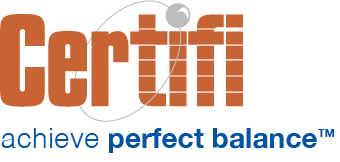The Affordable Care Act redefined health insurance and health care when it was passed in 2010. At a high level, it created health insurance marketplaces run either by the federal government or by each state. Like Section 1115 Medicaid Waivers, Section 1332 of the act also encouraged innovation by allowing states to apply for what is called a State Innovation Waiver.
States leverage these waivers to meet the goals of the ACA — high-quality, affordable health coverage. When submitting a waiver plan, states must show that their plan will deliver coverage that is at least as comprehensive as currently covered benefits. They must show that premiums and cost-sharing are at least as affordable. They must demonstrate that the plan will cover a comparable number of residents. Finally, they must prove that the plan will not increase the federal deficit. States can use the waiver to implement individual or employer mandates, modify essential health benefits, change metal tiers of coverage, change the standards for health insurance marketplaces and modify premium tax credits and cost-sharing reductions.
States may also receive additional funding should their innovation waiver save the federal government money. Many states have used a Section 1332 waiver to institute a reinsurance program. That reinsurance program lowers premiums by protecting insurers from high costs incurred by certain members. As a result, the federal government pays less in premium subsidies. States can recoup those funds in pass-through funding.
The Approval Process
States create a Section 1332 waiver application to start the approval process. States must first make that application publicly available so the public can provide input. The regulations also indicate which elements should exist in every application, which include:
- The provisions and rationale for waiving those provisions
- Data that supports that the waiver will provide just as comprehensive coverage, that it will be just as affordable, that it will cover a comparable number of people, and that it will not increase the federal deficit.
- Actuarial analysis that supports the above
- A 10-year budget plan that displays deficit neutrality
- A copy of the state legislation that allows the state to implement the proposed waiver
- A plan detailing how the state will implement the waiver
Once submitted, Health and Human Services (HHS) and the Department of the Treasury review the application. If those agencies judge the application complete, a public notice and comment period begins. A final decision takes no more than 180 days.
The Trump Administration and Section 1332 Waivers
The Trump Administration released guidance in late 2018 that relaxed the rules around Section 1332 applications. Essentially, the guidance re-defined coverage to include short-term plans as well as ACA-compliant plants, allowed states to promote plans not as comprehensive or affordable as marketplace plans as long as those marketplace plans still existed, modified how to evaluate the number of people covered, encouraged states to use private exchanges and subsidize non-compliant plans and relaxed the requirement that state legislatures authorize the waiver specifically.
How Have States Used Section 1332 Waivers?
Most states have leveraged the Section 1332 waiver program to implement reinsurance programs. In fact, of the 16 approved Section 1332 Waivers, 15 include a reinsurance program. Those states include Alaska, Oregon, Montana, North Dakota, Minnesota, Wisconsin, Colorado, Georgia, Maryland, Delaware, New Jersey, Pennsylvania, Rhode Island, New Hampshire, and Maine.
Hawaii is unique in that its waiver did not implement a reinsurance program. Instead, it enabled the state to essentially waive the requirement that they have an ACA Small Business Health Options Program (SHOP) for small businesses. Hawaii was able to show that its existing Prepaid Health Care Act ensured the availability of employer-sponsored health insurance to meet or exceed the goals of the ACA.
Georgia’s Section 1332 waiver was approved in late 2020. In addition to a reinsurance program, the waiver also took advantage of the Trump Administration’s relaxed waiver rules. The waiver created the Georgia Access Model, enabling the state to use private insurance exchanges through brokers, agents, or other third parties to sell both ACA-qualified health plans as well as non-qualified plans. Though the departing Trump administration approved the waiver, the Biden administration will likely rescind that approval.
How Do State Waiver Reinsurance Programs Work?
States design reinsurance programs to limit premium costs by reimbursing insurance carriers for certain high-cost members. States usually partially fund that reinsurance program while the federal government contributes funding through the previously mentioned pass-through expenses. In Minnesota, for example, the reinsurance program reimburses insurers 80% of claims above $50,000 up to a cap of $250,000, Montana reimburses 60% of claims paid between $40,000 and $101,750, and New Hampshire reimburses 74% of claims between $60,000 and $400,000.
By helping insurers cover these high-cost members, states can drive down premiums for their residents.
Are Section 1332 Waivers Ever Denied?
Yes, Section 1332 waivers — or even parts of approved waivers — have been denied. For example, Minnesota’s reinsurance program requested pass-through expenses equal to the amount the federal government would have spent on tax credits and cost-sharing subsidies. Plus, the waiver requested funds saved through the state’s Basic Health Program, MinnesotaCare. The Basic Health Program pass-through funding was not approved.
Other states have had their Section 1332 waiver requests deemed incomplete. For example, Idaho submitted a waiver application to enable those with incomes from 100% to 138% of the federal poverty level to purchase a qualified health plan instead of enrolling in Medicaid. The waiver was judged incomplete because the application didn’t have enough information to determine the effect of the waiver. Ohio submitted a waiver to waive the ACA’s individual mandate requirement that requires individuals to have insurance. The Centers for Medicare and Medicaid Services (CMS) determined the application didn’t comply with Section 1332 waiver requirements because it didn’t include a description of any program implementing a waiver plan.
Certifi helps states with Section 1332 waivers bill and collect payments from members thanks to a premium billing and collections solution.



